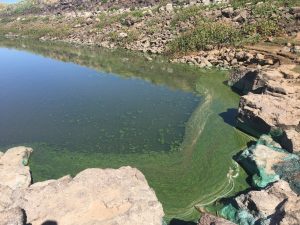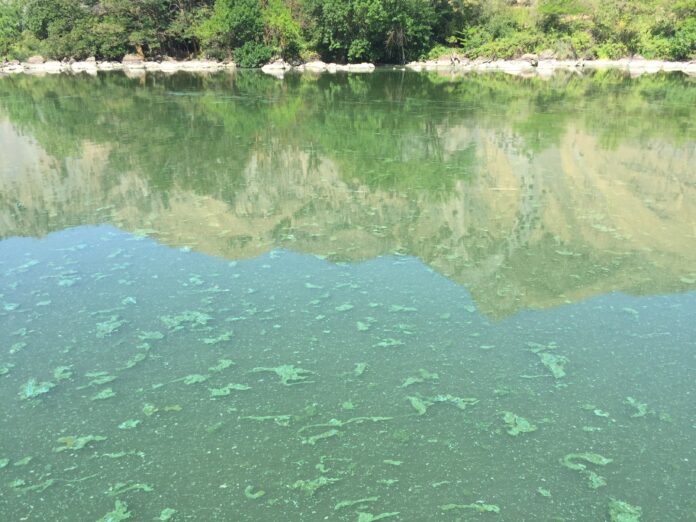By Hayden Seder

The hot month of August can lead to several environmental problems in the Blaine County area, from spontaneous wildfires to the forming of algal blooms in local water sources. What follows is an update on both of these ecological matters and what officials are doing about them.
Fires
Blaine County has been spared any wildfires this summer—thus far. But fire departments here are still making sure they are prepared for one to start at any moment in this dry, high-desert climate when temperatures are highest.
“The Sun Valley Fire Department has been prepared for the wildland fire season since the spring, but it has been relatively quiet,” said Taan Robrahn, Sun Valley Fire Department fire chief.
Relatively quiet, however, does not mean firefighters here have sat idle.
“We recently sent an engine and two firefighters to assist with a wildland fire on the Idaho/Nevada border and they just returned from that assignment,” said Robrahn. “We are continuing our preparation through weekly training and are hoping for an uneventful fire season.”
Algal Blooms
Several of Idaho’s water sources have been cited as containing blue-green algae, a bacteria that occurs naturally in freshwater and saltwater. The bacteria “blooms” in the right conditions and creates densely populated cells in the water, according to Chase Cusack, an Idaho Department of Environmental Quality water quality analyst.
“This is concerning because many of the bacterial species have the potential to produce toxins,” Cusack said. “Toxins are known to harm people at higher doses, showing both acute and chronic health issues.”
The algae especially becomes an issue in slow-moving water during summer, since the warm temperatures make for perfect conditions for bacteria to grow.
“Algal blooms are fairly common around the state because of high temperatures,” said Brianna Bodily, public information officer for South Central District Health (SWDH).
The Idaho Department of Environmental Quality (DEQ) currently has advisories of harmful algal blooms in 12 of Idaho’s water sources including Magic Reservoir, Hells Canyon Reservoir and Mormon Reservoir (although the DEQ advises that only a fraction of all water bodies in Idaho are monitored due to limited physical and monetary resources).
A press release regarding a health advisory for Hells Canyon Reservoir was issued Aug. 9 by SWDH and the DEQ, urging residents to use caution when recreating in or near the water. That’s because cyanobacteria can be harmful to people, pets and livestock, especially for those with liver or kidney damage. Those who might have been exposed to cyanotoxin might experience a myriad of symptoms such as rashes, hives, diarrhea, vomiting, coughing and/or wheezing.
“Some people have reported to us that they got sick from an algal bloom,” Bodily said. “For humans, the illness is not quite as bad and is usually something like eye irritation or a skin rash and won’t result in an in-stay hospital visit. The big concerns are the discomfort of the human and for their pets, which can be much more serious if they get ill from an algal bloom.”
For dogs, contact with blue-green algae can be deadly, with symptoms displaying anywhere from minutes after contact to several days. If your pet shows signs of vomiting/diarrhea, or is staggering, or has convulsions after playing in the water, take the animal to your vet right away. Reportedly, three dogs died from contact with blue-green algae in North Carolina and Georgia.
“Dogs are especially prone, as they spend a lot of time in the water drinking, playing, and fetching. Also, the process of cleaning themselves includes ingestion of toxins, and therefore they are even more prone,” Cusack said.
Much of the blue-green algae can be identified by its namesake color but some isn’t as obvious and may simply look like streaks of green surface scum. Stay on the safe side, officials say, and avoid any “scummy-looking” water until all advisories have been cleared.

